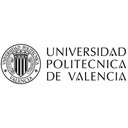This course is part of Fundamentos de Química.
This comprehensive chemistry course focuses on teaching students how to establish formulas for inorganic and organic chemical compounds and the rules for naming them correctly. Designed primarily for university students, especially those who haven't previously studied chemistry, this course provides fundamental knowledge in chemical nomenclature. Students will learn to identify and properly name common inorganic and organic chemical compounds through structured units covering binary, tertiary, and quaternary substances, as well as various organic compounds including hydrocarbons, halogenated functions, oxygenated functions, nitrogenated functions, and compounds with multiple functional groups. The course builds essential chemistry literacy skills necessary for further scientific studies.
(5 ratings)
19,936 already enrolled
Instructors:
Spanish
Español
What you'll learn
Learn the rules used to establish formulas for chemical substances and species
Master the naming conventions for inorganic and organic compounds
Identify and correctly name common inorganic chemical compounds
Understand the formulation of binary, tertiary, and quaternary substances
Recognize and name different types of hydrocarbons
Identify halogenated, oxygenated, and nitrogenated functional groups
Skills you'll gain
This course includes:
PreRecorded video
Graded assignments, exams
Access on Mobile, Tablet, Desktop
Limited Access access
Shareable certificate
Closed caption
Get a Completion Certificate
Share your certificate with prospective employers and your professional network on LinkedIn.
Created by
Provided by

Top companies offer this course to their employees
Top companies provide this course to enhance their employees' skills, ensuring they excel in handling complex projects and drive organizational success.





There are 10 modules in this course
This course covers the fundamental principles of chemical formulation and nomenclature, providing students with the knowledge to correctly identify and name both inorganic and organic chemical compounds. The curriculum begins with an introduction to inorganic substance nomenclature before exploring binary, tertiary, and quaternary substances in detail. The course then transitions to organic chemistry, covering the basics of organic compound formulation before delving into specific compound classes including hydrocarbons, halogenated functions, oxygenated functions, nitrogenated functions, and compounds with multiple functional groups. Throughout the course, students learn the standardized rules for establishing chemical formulas and naming various chemical substances according to international nomenclature conventions.
Introducción y nomenclatura de sustancias inorgánicas
Module 1
Sustancias binarias
Module 2
Sustancias terciarias
Module 3
Sustancias cuaternarias
Module 4
Introducción a la formulación y nomenclatura de compuestos orgánicos
Module 5
Hidrocarburos
Module 6
Funciones halogenadas
Module 7
Funciones oxigenadas
Module 8
Funciones nitrogenadas
Module 9
Compuestos con dos o más grupos funcionales
Module 10
Fee Structure
Individual course purchase is not available - to enroll in this course with a certificate, you need to purchase the complete Professional Certificate Course. For enrollment and detailed fee structure, visit the following: Fundamentos de Química
Payment options
Financial Aid
Instructors

13 Courses
Profesor Titular at Universitat Politècnica de València
Juan Antonio Llorens Molina is a professor at Universitat Politècnica de València, specializing in Analytical Chemistry. He teaches chemistry in the School of Agronomy and Natural Environment.

5 Courses
Profesora del Departamento de Química
Teresa Pardo Vicente is a professor in the Department of Chemistry at the Universitat Politècnica de València. She teaches various chemistry-related subjects at the Escuela Técnica Superior de Ingeniería del Diseño. She is a co-author of several educational publications and has extensive experience in teaching and educational innovation, particularly in the early courses of industrial engineering degree programs
Testimonials
Testimonials and success stories are a testament to the quality of this program and its impact on your career and learning journey. Be the first to help others make an informed decision by sharing your review of the course.
Frequently asked questions
Below are some of the most commonly asked questions about this course. We aim to provide clear and concise answers to help you better understand the course content, structure, and any other relevant information. If you have any additional questions or if your question is not listed here, please don't hesitate to reach out to our support team for further assistance.



